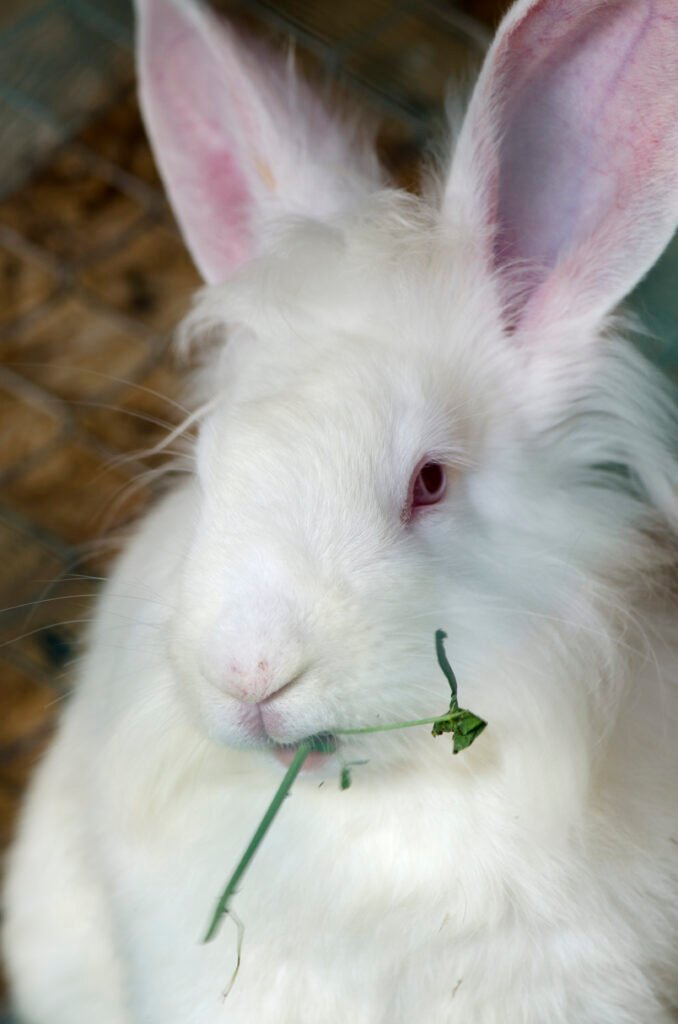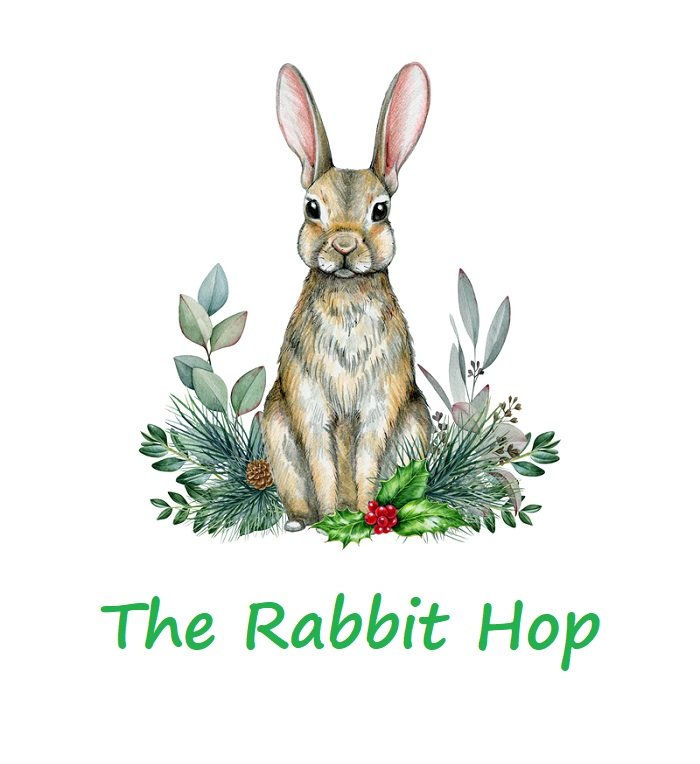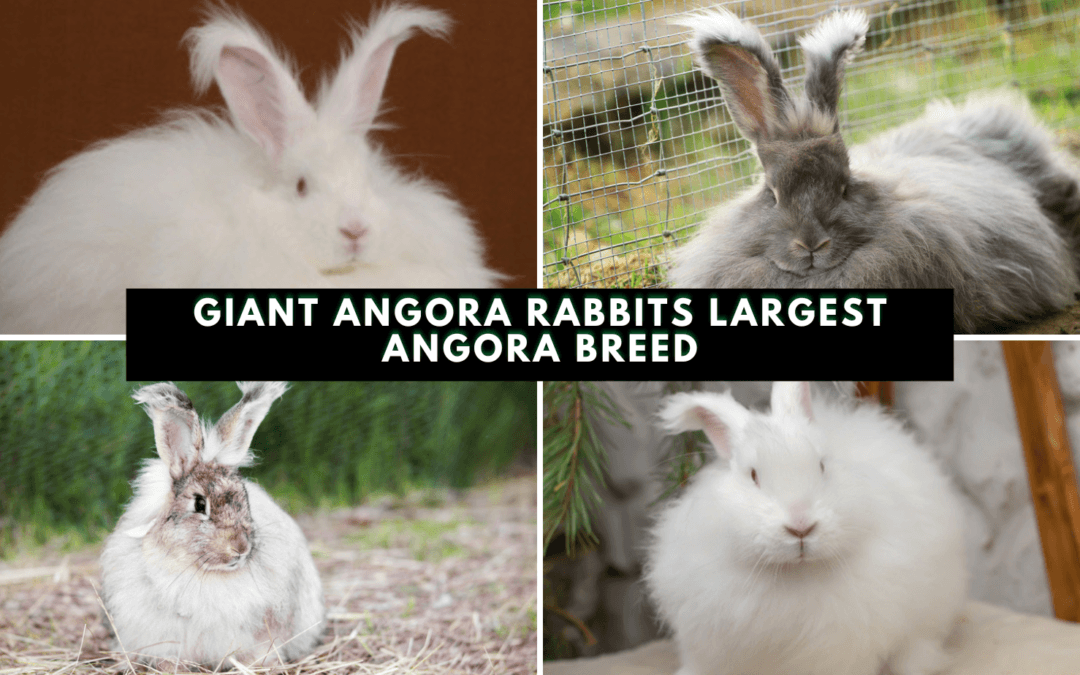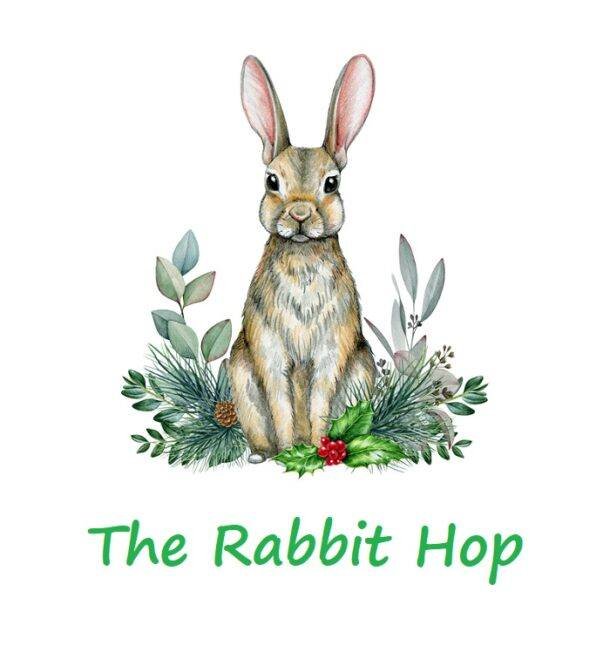Giant Angora rabbits are unique in many ways. They look like other Angora breeds but are larger and have different types of fibers on their coats. These bunnies can produce lots of wool. But besides their commercial benefit, they are also good friends. Giant Angoras love attention and socialization. Learn more about them through this article!

Giant Angora munching leafy greens
Facts about Giant Angora Rabbits
| Body Size | Large |
| Body Weight | 9.5 to 16 lbs |
| Body Shape | Commercial |
| Life Span | 7 to 11 years |
| Colors | Agouti, white, broken, shaded, self |
| Similar Breeds | English Angora, Flemish Giant |
| Best Suited for | Experienced rabbit owners, families with older children |
| Origin | Ankara, Turkey |
Background and History
Angora rabbits originated in Ankara, Turkey. It is believed that these bunnies have been domesticated for their wool for over 2,000 years. They are also known as one of the oldest types of wooly rabbits. Because of their charming looks, they became popular pets for the French royalties.
When the Angora rabbits came to the United States in the 1900s, they were called the Angora Woolers. However, ARBA recognized the English Angora and French Angora in 1944. However, other breeds, including the German Angora, haven’t been recognized.
The ARBA didn’t recognize German Angora because it resembled English Angora. Louis Walsh bred English Angora and Flemish Giant to create a unique breed. It resulted in the offspring called Giant Angora.
Because of its size, the Giant Angora is the biggest Angora breed until today. It is also notable for its furnishings and high-quality wool. Upon seeing its distinction, ARBA acknowledged the Giant Angora in 1988. However, the only variety recognized by ARBA is the Ruby Eyed White. Today, the Giant Angora is also a 6-class breed.
Features of Giant Angora Rabbits
Body Size
Giant Angora rabbits are the biggest of all the Angora breeds. ARBA doesn’t have a maximum weight, but the association sets a minimum weight for seniors. The minimum weight for senior bucks is 9.5 and 10 lbs for does. However, the bucks can reach 14 ¼ lbs while the does can weigh up to 16 lbs. This breed is ⅓ larger than German Angora!
In terms of appearance, the Giant Angora has a commercial body with a large oval head. Its muzzle is narrow, while its forehead is broad. You will also notice furnishings on its cheeks and forehead. Out of all the Angora breeds, the Giant Angora is the only one that belongs to the 6-class. They can qualify for one of the six classes.
The junior buck and junior doe must be under six months with a minimum weight of 4 ¾ lbs. The intermediate buck and doe are six to eight months, while the senior buck and does are over eight months. Like other large breeds, Giant Angora grows slowly compared to smaller bunnies. It takes more than one year for the doe to grow. The buck needs to wait for 1.5 years to reach full maturity.
Coat
Of all the Angora breeds, Giant Angora can yield the most wool. You can also find three types of fur on its coat: the underwool, the awn fluff, and the awn hair. The most dominant fur is the underwool, known for gentle waves and a gentle shine. The other is the awn fluff between the underwood and the awn hair. The last is the awn hair, also called the guard hair.
You must harvest the Giant Angora’s wool every three months to keep them comfortable and healthy. Their coats are used as apparel and sweaters. Some breeders keep them as fiber animals. But because of their friendly nature, they are also suitable household pets. Their coats have various colors, but ARBA only recognizes the Ruby Eyed White variety.
Temperament and Behavior

Like most other Angora breeds, the Giant Angora has a gentle and laid-back nature. But because of its size, it needs more space and freedom. Angoras create lasting relationships when you give them a chance to socialize. Give them enough time to spend outside their enclosures as much as possible. This breed is not recommended for those who live in the apartment.
Since they can quickly adapt, Giant Angora rabbits are ideal family pets. But make sure that your children are already old so they can handle these bunnies well. A small kid and a giant bunny will not work. In a second, one may leave the other injured. So, if you have small children, you may prefer smaller rabbits.
If the bunny is new in your house, give it time to adapt to its new environment. Don’t be too pushy since the bunny may get frightened or aggressive. One of the ways to make them comfortable is by handling them properly. Giant Angoras love to be groomed since they can bond with their owners. They are great and lasting companions when they are at ease with you.
Grooming Giant Angora Rabbits
Before getting a Giant Angora rabbit, you must know that grooming its coat is crucial. Its coat can grow 1.2 inches monthly. Without proper grooming, the fur of this bunny may get too thick, resulting in health issues. You also need specific tools when grooming rabbits. Some of them are small-tooth comb, grooming brush, double-sided comb, scissors, and blower.
Double-sided combs are useful when harvesting wool. On the other hand, scissors are used to cut rugged mats in the bunny’s coat. Using a blower is also essential to remove loose hair and debris. As much as possible, use an animal blower since they are quiet and compact. The temperature it releases is also not harmful to your pet’s skin.
You must groom a Giant Angora at least once or twice a week. If it is shedding, you must brush its coat frequently. Grooming your bunny regularly will prevent matting and loose fur. Don’t forget to bring it to a groomer four times a year for coat trimming.
Proper Diet
In feeding a Giant Angora, you must provide an unlimited supply of hay since it is 70% to 80% of the bunny’s diet. Hay is a good source of fiber that helps the bunny’s digestion. Aside from that, feeding it with enough roughage will prevent the overgrowth of its teeth. As we know, malocclusion affects the health of the bunny.
Since Giant Angora is involved in wool production, it requires pellets with at least 16% to 18% protein. Besides hay, you must also provide it with leafy greens and fruits as supplements. As a reminder, not all fruits and vegetables are good for bunnies. Before adding new food to its diet, consult a vet or do some research.
Considering the food bowl of your bunny, one of the best options is the metal sifter feeder. You can attach it inside or outside the enclosure to prevent your bunny from getting the feed. To save space, place the feeder high enough for your pet to reach it. Also, don’t forget to clean the food bowl with clean water and soap at least once a week.
Habitat
Choosing a suitable habitat for Giant Angora rabbits is crucial. These giants love to play, hop, and run around, so you need the largest cage you can find. The enclosure must have a solid floor two to three inches above the ground. You must also make safe places where your rabbit can hide. Putting empty boxes will do.
In setting up the cage, don’t forget to place furnishings. Your bunny will appreciate it if there are some toys or items that can stimulate their minds. Angora rabbits are intelligent, so they quickly get bored when they don’t have anything to play with. Don’t use pine shavings for bedding since they may cause respiratory or liver problems. You can choose from apple, maple, and oak.
If you plan to put the cage outdoors, ensure it is near your home so you can easily monitor your bunny’s condition. You must also set the enclosure where there is shade since they may suffer from heatstroke. To keep the bunny clean, clean its enclosure regularly.
Health Issues of Giant Angora Rabbits
Obesity
Obesity is a common condition experienced by large rabbits like Giant Angora. Although they are big, their food intake must have limitations. Some rabbit owners tend to monitor the amount of food they feed to these gentle giants. Besides too much food, rabbits who lack exercise may also suffer from this condition.
Ignoring obesity may lead to more problems, such as liver disease and heart disease. A rabbit that experiences obesity is gaining weight. You may also notice that it is having difficulty breathing, and its coat is poorly groomed.
You can help a Giant Angora rabbit lose weight by adjusting its diet. Provide high-fiber food like hay and reduce the calories in its diet. You must also prevent giving too many treats. Treats must only be provided occasionally. Encourage your bunny to exercise by providing it with a large enclosure.
Rabbit Hemorrhagic Disease
Rabbit hemorrhagic disease, also known as RHDV2, only affects rabbits and hares. It is a contagious and fatal condition caused by the calicivirus. This disease needs immediate attention since it kills rabbits without warning. Below are some of the symptoms of RHDV2 that you must be aware of:
- Swelling
- Bleeding in the eyes
- Loss of appetite
- Lethargy
- Difficulty in breathing
- Yellowing of the skin
- Bleeding in the anus, nose, and vent
Unfortunately, this condition has no cure. However, some vaccines can prevent the transmission of the disease. There are also some things that you can do to protect your bunny against the disease. Sanitizing your rabbit’s cage with soap and water can help. You can also disinfect the enclosure by using a dilution of household bleach.
Frequently Asked Questions
What is the use of Giant Angora rabbits?
The wool of Giant Angora rabbits is used to make sweaters, mittens, and knitted clothes. Other rabbit owners breed these bunnies to sell them to other breeders. The average cost of Giant Angora ranges from $50 and $250. You can also use its wool to make crafts that you can sell online.
How long can a Giant Angora live?
A Giant Angora can live up to five to eight years. It can live longer through proper diet and regular grooming.
Can I potty train a Giant Angora rabbit?
You will need a lot of patience when you potty train rabbits since they are not fast learners, unlike dogs and cats. However, it is possible with your effort and dedication.
Conclusion
Giant Angora rabbits yield more wool than other rabbits. Aside from their wool, they are also known as good pets. However, you need to give them a lot of attention to grooming. Their coats grow very fast, so regular trimming and brushing are necessary. If you want to keep a Giant Angora, ensure that you can provide the required space, diet, and care.
Read More



